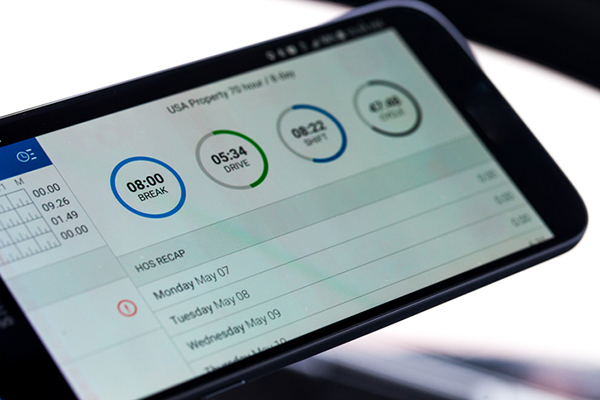HOS reforms facing 18-month delay due to Democrats’ desire for ‘comprehensive review’
It’s taken the better part of two decades to reform truck drivers’ hours of service (HOS) regulations in Washington. It might take another 18 months or so, if Democrats on Capitol Hill have their way.
House Democrats are requesting what they call a “comprehensive review” of the final HOS rule governing as many as 3.5 million long-haul truck drivers. Those long-haul drivers, mostly in the $340 billion truckload sector, would stand to gain some efficiencies from four major changes in HOS rules recently announced by the Federal Motor Carrier Safety Administration (FMCSA). Those changes are:
- Added flexibility for the 30-minute break rule by requiring a break after eight hours of consecutive driving and allowing the break to be satisfied by a driver using on-duty, not driving status, rather than off-duty status required under the existing rule;
- A modified sleeper-berth exception to allow driver to split their required 10 hours off duty into two separate periods, in the form of an 8/2 split or a 7/3 split—with neither period counting against the driver’s 14-hour driving window;
- Modifications for adverse driving conditions exception by extending by two hours the maximum window during which driving is permitted, with the current rule already permitting two hours of additional drive time in a drivers 11-hour clock; and
- changes to the short-haul exemption available to certain commercial drivers by lengthening the drivers’ maximum on-duty period from 12 to 14 hours and extend the distance limit within which the driver may operate from 100 air miles to 150 air miles
Those regs were scheduled to go into effect on Sept. 29. They are among a host of changes in federal regulations. Some are part of an executive order signed by President Donald Trump authorizing federal agencies to loosen some regulations that “may inhibit economic recovery” due to the COVID-19 pandemic.
But Democrats are pushing back. House Democrats unveiled a request for a lengthy review in the fine print included in their Investing in a New Vision for the Environment and Surface Transportation in America (INVEST in America) Act. That’s a five-year, $494 billion surface transportation reauthorization bill unveiled by the House Transportation & Infrastructure Committee.
David Heller, vice president of government affairs for the Truckload Carriers Association, said certainly “there is some concern without a doubt” about the Democrats’ request for delay. Also, there is a chance that highway safety groups might sue, causing further delay. However, he noted that most of the concerns seemed to be on the short-haul exemption, which could be satisfied without delay.
“We obviously do have concerns and it is something we are watching very closely,” Heller told LM. “There is still the potential for litigation also out there. At this point were taking it as Sept. 29 as the go date for now. But there are a lot of things that can happen between now and September.”
Noting that TL carriers represent “the lion’s share of trucking,” Heller said the new FMCSA regs answer drivers’ longstanding requests for increased flexibility in taking time out from their 14-hour work day that includes a maximum 11 hours of driving. Those hours are not changed under the new regs. Rather, for example, drivers would get some relief from their 14-hour clock due to unforeseen incidents such as delays at shippers’ docks, traffic congestion, weather, etc.
“Getting some flexibility and ability to stop that 14-hour clock has always been crucial,” TCA’s Heller said. “This allows us to be more flexible. It is something certainly that our members would take advantage of, having the ability stop that clock, and pull over and take that three-hour break during Atlanta rush hour, for example.”
The issue almost exclusively affects TL carriers. But as Satish Jindel of SJ Consulting said, “This makes life a little easier for the drivers. They knew it was coming. Even then, it’s not that much material impact.”
But that impact may be dulled by the Democrats’ review of the bill included in their “Investing in a New Vision for the Environment and Surface Transportation in America” (INVEST in America) Act. That’s part of a five-year, $494 billion surface transportation reauthorization bill passed by the House T&I Committee. It now must be reconciled with the Republican-passed $287 billion Senate proposal to replace the FAST Act, which expires at the end of September.
“I am proud to bring together the ideas and the needs into one transformational bill that will catapult our country into a new era of how we plan, build and improve U.S. infrastructure,” commented Committee Chairman Peter DeFazio, D-Ore., said in a statement.
Included in that 864-page bill is legislation authorizing $3 billion for motor carrier safety assistance and operations programs for fiscal years 2022 to 2025. Comprehensive safety reviews would be required by the DOT, as part of that bill.
The Democrats are requesting Transportation Secretary Elaine Chao, in consultation with state motor carrier enforcement entities, to “undertake a statistically valid analysis to determine the safety impact, including on enforcement, of the exemptions, waivers, or other allowances” that might affect the final rule, according to the bill. Such findings would have to be published and also would require public comment.
FMCSA acting administrator Jim Mullen said the new rule will help carriers by providing “critical regulatory savings.” It’s just perhaps truckers may have to wait a bit more to achieve those savings.
Still, the hope is that these changes will go into effect as scheduled at the end of September. “I’m definitely optimistic, without putting odds on it,” TCA’s Heller said. “Flexibility is paramount to our drivers and these regs give the drivers some new flexibility.”













